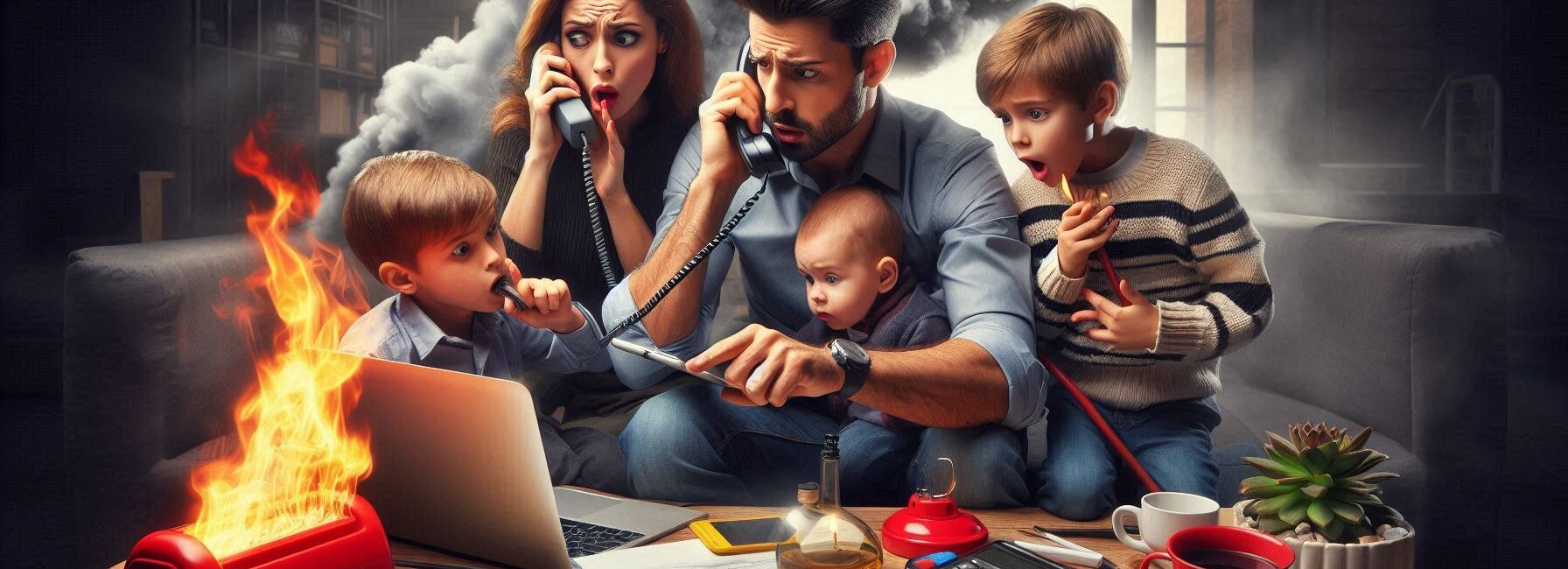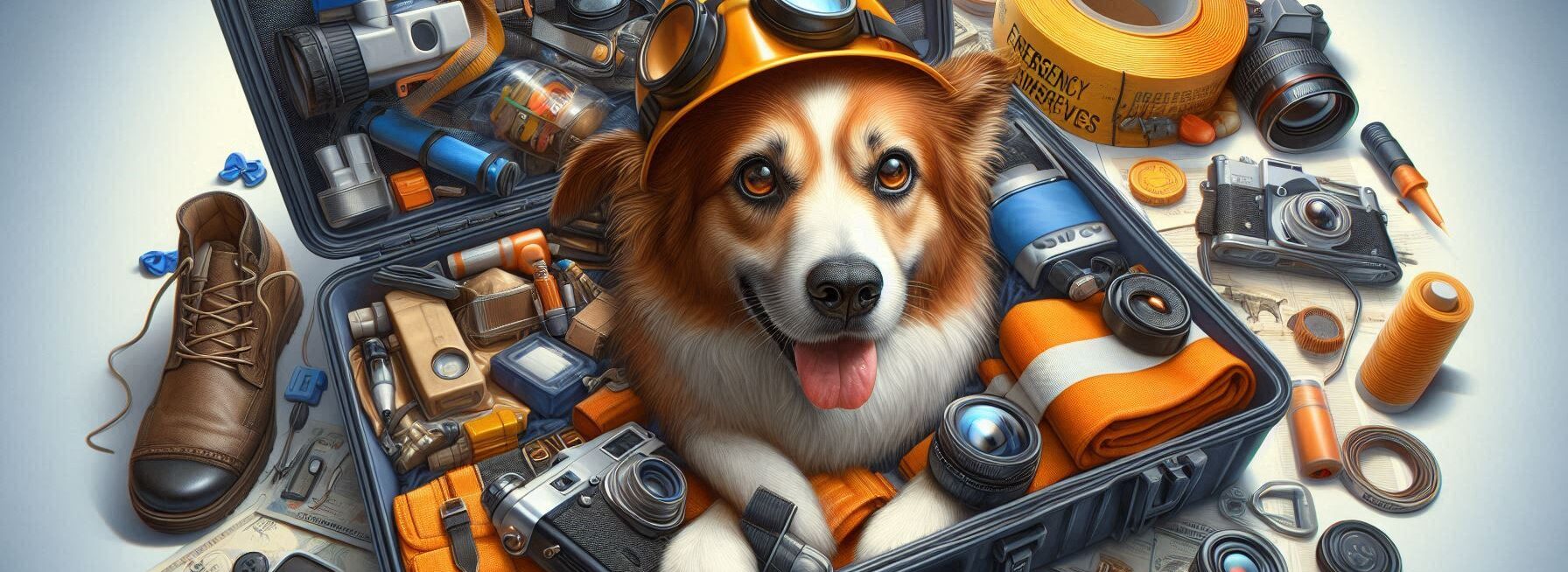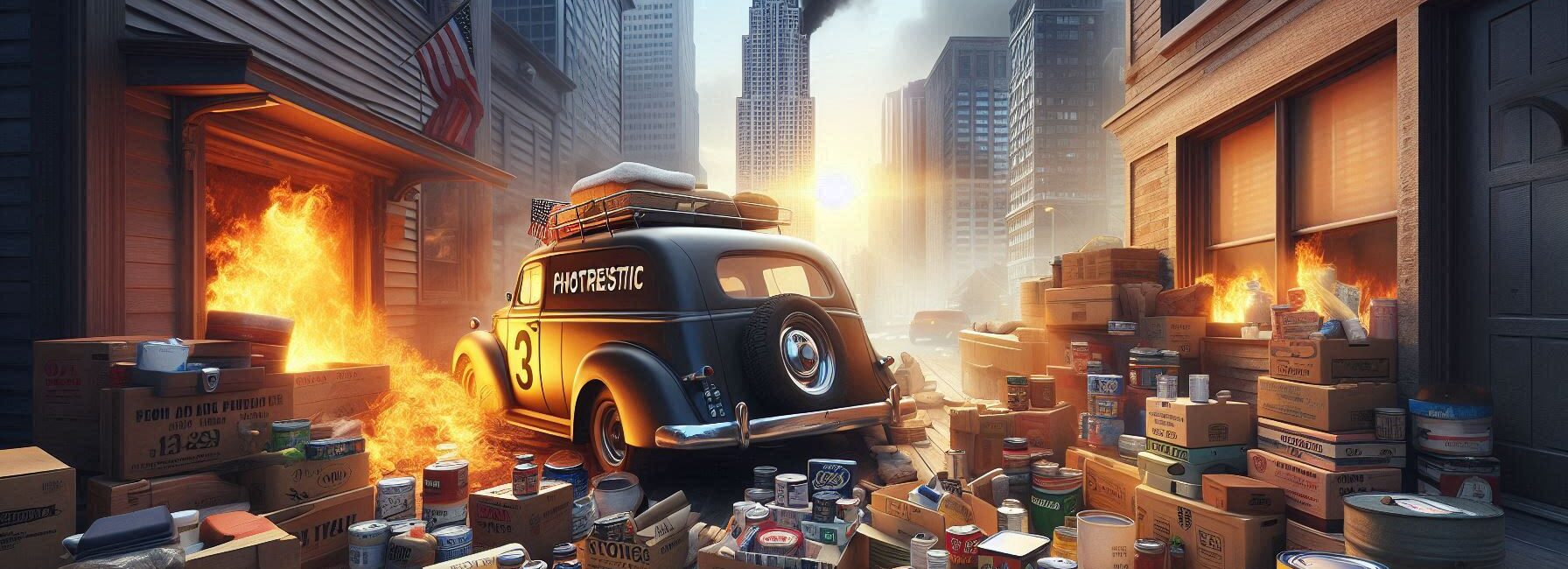Please Note: This post may contain affiliate links. If you click one of them, we may receive a commission at no extra cost to you. As an Amazon Associate, I earn from qualifying purchases.
Last Updated on November 2, 2025 by Kevin Collier
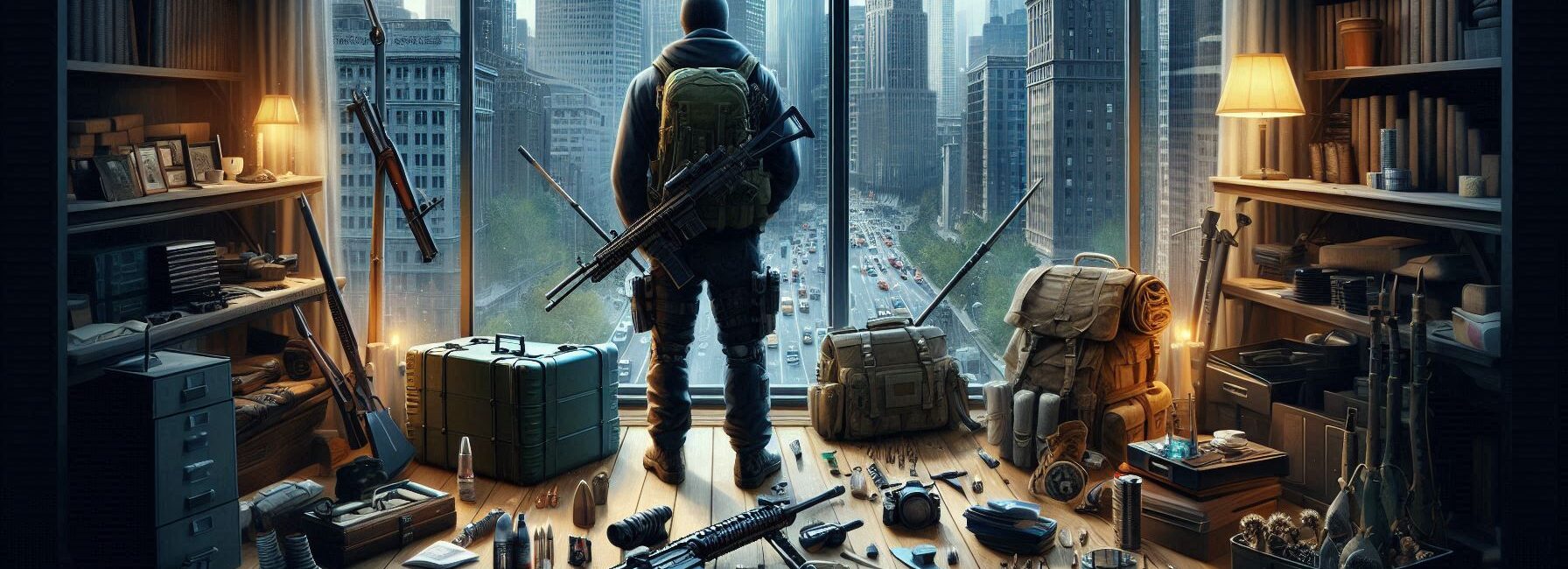
Top Takeaways and Key Concepts
- Create a family emergency plan with meeting points, communication, and pet care.
- Assemble an emergency kit with water, non-perishable food, flashlights, and first-aid supplies.
- Secure your home with strong locks, reinforced doors, and strategic furniture placement.
- Stay informed using reliable news sources, battery-powered radios, and verified social media updates.
- Connect with neighbors and maintain calm to handle chaos without turning home into a fortress.
Life really can feel like one big game of Jenga, can’t it? One little shake, and everything feels off balance. Whether it’s something big like political stuff or just your neighbor’s dog deciding to have a karaoke night at 3 AM, chaos can show up when you least expect it. Super frustrating, right?
You want to be ready without turning your home into a fortress that looks like it’s from a movie. Who wants that? Let’s keep it real and cozy while staying smart. Grab your favorite snack (maybe something soft, so it won't make too much noise), and let’s talk about some easy ways to prepare for whatever might happen.
First, think about making a plan. Talk with your family. What would you do if things got really wild outside? Having a plan helps keep panic from sneaking in. It can be as simple as knowing where to meet up if you get separated. Draw it out! It doesn’t have to be fancy. Just a little map on the back of a napkin can go a long way.
Next, you might want to have your emergency kit ready. Snacks, water, first aid stuff. You know, basics. Include things like flashlights and batteries, too. Make sure everyone knows where it is. It’s like having a special treasure chest that keeps you safe!
Prepare your home a little without going overboard. Just secure windows and doors. A little reinforcement doesn’t hurt. No need to barricade everything. You still want to feel at home, not like you’re living in a bunker, right?
Keeping an eye on news and updates can help too. It doesn’t mean you have to obsess, but knowing what’s happening lets you feel a bit more in control. Maybe even agree on “news time” together—so it’s a fun family chat instead of a scary surprise.
Finding ways to connect with neighbors helps, too. A chat over the fence could work wonders. You never know when your neighbor could become a friend or ally. Plus, it makes you feel more like part of a community, ready to face the world together.
Being prepared means you can handle things as they come without turning your place into a military zone. You’ll feel like you can handle chaos without losing your chill. It’s all about balance—like a perfect Jenga tower. Stay ready, stay safe, and keep that snack nearby!
Contents of This Page
*** Shop for Survival Gear - Tools - Kits ***
Survival Gear - Bags and Backpacks - Knives - Boots/Footwear - Communication
Outdoor Cooking - Gloves - Hydration - Dry Boxes - Water Filtration Systems
Tents - Sleeping Bags - First Aid Kits - Multi-Tools - Flashlights - Fire Starters
Navigation - Survival Food - Night Vision - Headlamps - Stun Guns - Binoculars
Understanding the Signs: What to Look For
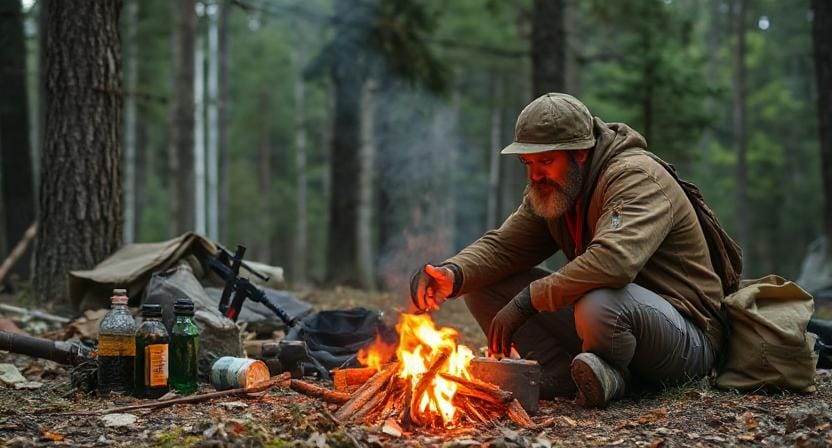
First things first—how do you know when things are about to get dicey? It isn’t always as obvious as a marching band parading through your living room. Sometimes the signs are subtle, like your local coffee shop running out of pumpkin spice lattes (a sure sign that something is brewing).
Pay attention to news reports and social media trends. If people are getting fired up over an issue, chances are they might take their passions to the streets. And while scrolling through Twitter may not sound like “prepping,” keeping tabs on what people are saying can give you insights into potential unrest.
Interestingly enough, community gatherings and protests can also be indicators. If you see more flyers than usual on community boards or if town hall meetings start looking like a scene from a reality show reunion episode—buckle up!
Creating Your Emergency Plan: The Family Meeting
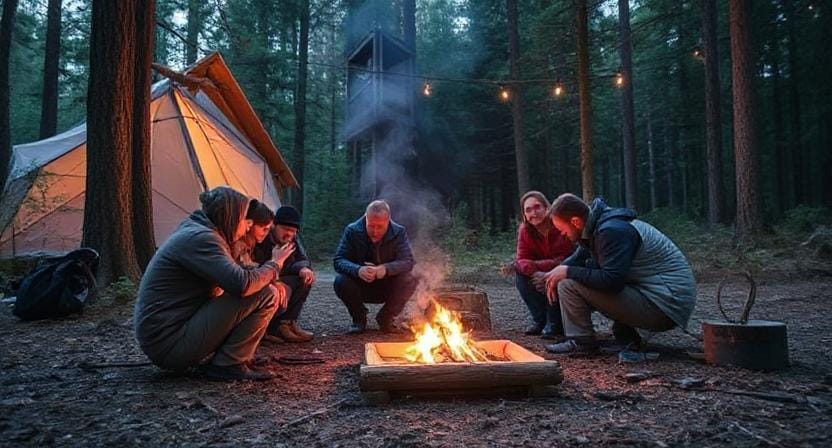
Now that we’ve got our eyes peeled for trouble, let’s talk strategy. This isn’t just about hiding under the bed with snacks (though I’d recommend having snacks ready). It’s time to gather the family for an emergency meeting—think less “we need to talk” and more “let's plan our escape route.”
Start by discussing how everyone will communicate during an emergency. In today’s world of smartphones and instant messaging, it seems simple until you realize that cell towers might be overwhelmed or non-functional during crises.
Designate a meeting point outside your home in case you need to evacuate quickly; maybe even consider somewhere fun—a park or ice cream shop could work wonders for morale!
And speaking of morale, don’t forget about pets! Discuss who will take care of them if things go south because nothing says “civil unrest” quite like trying to wrangle a cat who thinks it’s still nap time.
Stocking Up: Supplies You’ll Want on Hand
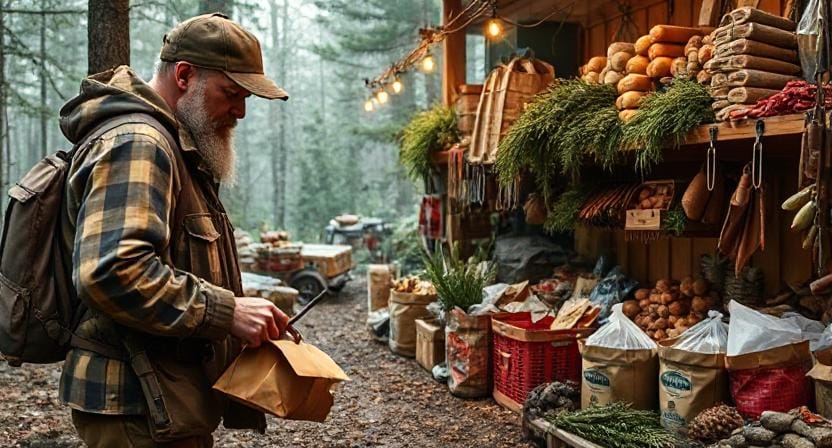
It's time for some serious stocking-up action! Think of this as preparing for an extended camping trip but without all the fun campfire stories—unless you're really good at telling ghost stories under duress.
You’ll want non-perishable foods that require minimal prep; canned goods are great here (who knew beans could become such close friends?). And don’t forget water! A gallon per person per day is recommended—you don’t want anyone dehydrating while waiting for Netflix to buffer during a crisis.
Also consider medical supplies: Band-aids (for emotional wounds), antiseptic wipes (to clean up after any unfortunate incidents), and any medications specific to family members’ needs should be part of your stash.
I’d rather have too many antiseptic wipes than none at all when someone inevitably bumps their head trying to escape through the window.
Fortifying Your Home: Making It Safe
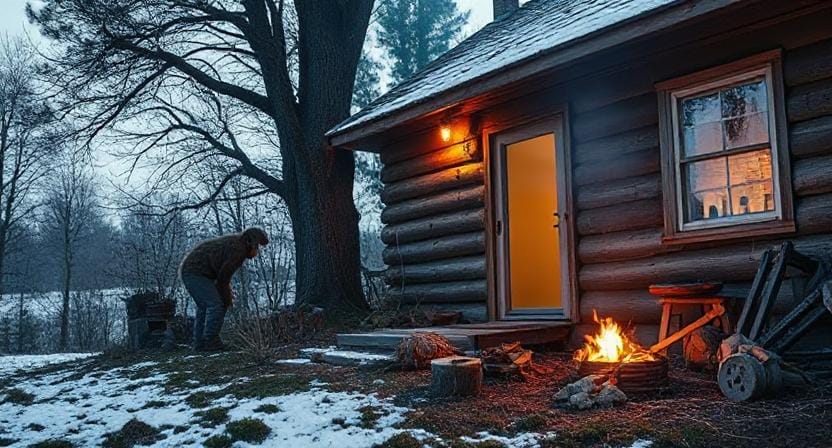
Ensuring your home feels safe is also important when getting ready for civil unrest. This doesn't mean putting laser beams around every entrance (though that would be amazing). Instead, you might want to add strong locks and maybe some plywood to your doors and windows if you want to be particularly safe.
Think of using furniture to make barriers, like the cool forts we made as kids but with more adult supervision. To keep people from seeing your expensive things from outside, move them away from windows. No one wants their collection of porcelain cats to go missing during a fight.
Also, lighting is important! Keep flashlights close by. They not only help you find your way in the dark, but they also make you feel better when things are tense and chaotic.
Knowledge is Power When Things Are Going Wrong
It's important to stay informed when things are uncertain, but keep in mind that not all sources are the same. Aunt Mildred's Facebook posts might be funny (“Did you hear about the squirrels forming a union?”), but you should stick with reliable news sources instead.
Buy a battery-powered radio so you can get news even when the power goes out. I also like listening to crackly broadcasts since they remind me of old-timey movies where everyone wears bowler hats.
Social media can give you updates in real time, but keep in mind that false information spreads quicker than fire these days. Before you react, make sure the information is correct. After all, no one wants to go into rabbit holes because of panic!
Conclusion: Keeping Calm Amid Chaos
Getting ready for civil unrest doesn’t mean you have to live in fear all the time. It’s more about being smart and prepared. That way, when things get a little crazy, you can handle it with confidence. Maybe even with a laugh or two.
You know how plans can change? They can really shift like sand under your feet. Flexibility is super important. Sometimes, you just have to roll with it. One minute everything seems fine, and the next, it’s like, “Whoa, what’s happening?”
Stocking up on snacks? Great idea! Who doesn’t love snacks? Just think: if things get a little rough, you’ll be munching away instead of stressing. It’s all about those little comforts. Chips, granola bars—whatever makes you happy. You’ll feel a little better knowing you have something to crunch on while the world sorts itself out.
Maybe you’re also chatting with your loved ones about where to go if things get messy. Escape routes can sound intense, but it’s just smart planning. You can even make a game out of it! Draw a funny map together. Joking about what to do can lighten the mood. It’s not just serious business; it can be fun, too.
Living life one day at a time helps, too. Enjoy those simple moments, like sipping coffee while wearing your favorite comfy socks. If you ever feel too tense, just take a break and breathe. Remember, laughter is powerful. It can cut through a lot of heavy feelings.
Staying alert is good. Keep an ear out for what’s happening, but don’t let it rule you. You deserve peace even when things feel a bit chaotic. Being proactive doesn’t mean you’re worried all the time. It’s about facing the storms head-on with a smile and a snack in hand.
Frequently Asked Questions
What should a family emergency plan include?
Your plan should have communication methods, meeting points, and details for pets or vulnerable family members.
What items should go into a civil unrest emergency kit?
Include water, non-perishable food, flashlights, batteries, basic first-aid supplies, and hygiene items.
How can I improve home security without going overboard?
Use strong locks, reinforce doors, secure windows, and place furniture strategically while keeping the home livable.
Why should I monitor news and alerts during unrest?
Accurate information provides situational awareness, helps avoid misinformation, and guides safe decision-making.
Are battery-powered radios still worth having?
Yes, they work during power outages and can deliver reliable updates when digital networks fail.
Do neighbors matter during civil unrest?
Yes, collaborating with neighbors increases safety, resource sharing, and emotional support when things are tense.
How do I stay calm when the situation becomes chaotic?
Focus on clear plans, rely on pre-positioned supplies, and avoid panic by staying informed from credible sources.
Suggested Resources:
Civil Unrest Preparedness Guide
https://www.ready.gov/civil-unrest-preparedness-guide
Emergency Preparedness Resources
https://www.redcross.org/get-help/how-to-prepare-for-emergencies.html
Personal Safety Tips During Civil Unrest
https://www.nationalgeographic.com/adventure/article/personal-safety-tips-during-civil-unrest

Kevin Collier is a seasoned survivalist and expert in prepping and homesteading, contributing to WiseSurvive.com. With a deep-rooted passion for self-sufficiency and outdoor survival skills, Kevin shares practical advice, strategies, and resources to help individuals prepare for any challenge. His informative articles cover a range of topics, from essential survival techniques to sustainable living practices, empowering readers to thrive in any situation. Whether you're a novice or a seasoned prepper, Kevin's insights will inspire you to take charge of your readiness and build resilience for the future.

